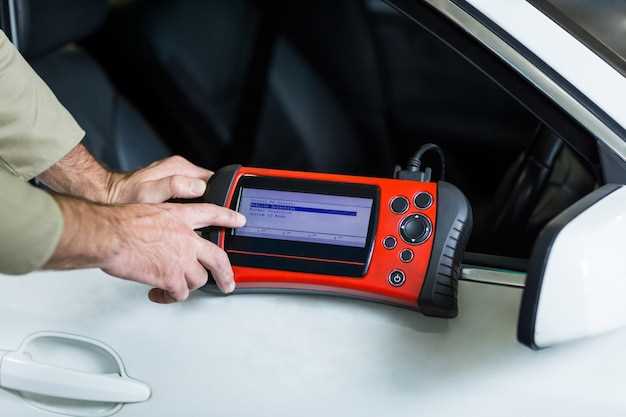
The transmission is a crucial component of any vehicle, responsible for transferring power from the engine to the wheels. When issues arise, particularly slipping, it can significantly affect the vehicle’s performance and safety. Transmission slipping occurs when the engine revs up without a corresponding increase in vehicle speed, indicating a potential malfunction within the system.
Identifying the root cause of transmission slipping is essential for effective repair. Various factors, such as low transmission fluid levels, worn-out components, or faulty sensors, can contribute to this problem. Addressing these issues promptly can prevent more severe damage and costly repairs in the future.
This article provides a comprehensive guide on how to diagnose and resolve transmission slipping issues. From understanding the signs to performing necessary repairs, we’ll equip you with the knowledge needed to handle this common automotive concern.
Identifying the Symptoms of Transmission Slipping

Transmission slipping occurs when your vehicle doesn’t shift gears smoothly or as intended, leading to a noticeable decrease in performance. Recognizing the symptoms early can help you address the issues before they escalate. Here are some key indicators to look out for:
Delayed Engagement: One common symptom of transmission slipping is a delay when shifting from park to drive or reverse. If you notice that your vehicle takes longer than usual to engage the desired gear, it may be a sign of slipping.
Unexplained High RPMs: If your engine revs unusually high without a corresponding increase in speed, it’s a strong indication of transmission problems. This symptom is often accompanied by a lack of acceleration despite pressing the gas pedal.
Inconsistent or Harsh Shifting: If you experience abrupt or harsh shifts between gears or notice that your vehicle hesitates before shifting, these could be signs of a slipping transmission. Smooth gear transitions are critical for efficient performance.
Warning Light: Many modern vehicles are equipped with warning lights on the dashboard that indicate transmission issues. If the check engine light or transmission fluid light illuminates, it’s essential to investigate further.
Tips: Regular maintenance of your vehicle’s transmission fluid and components can help prevent slipping. Always consult your vehicle’s manual for the recommended service intervals and fluid types.
Being aware of these symptoms allows you to take timely action, potentially saving money on repairs. If you suspect your transmission is slipping, consulting a professional mechanic is advisable for a thorough diagnosis and timely solutions.
Step-by-Step Guide to Check Transmission Fluid Levels and Quality
Checking the transmission fluid levels and quality is essential for maintaining the performance of your vehicle. Follow these steps to ensure your transmission is functioning correctly.
Step 1: Prepare Your Vehicle
Park your vehicle on a level surface and engage the parking brake. This ensures safety while you perform the check. Start the engine and let it idle for a few minutes to warm up the transmission fluid.
Step 2: Locate the Transmission Dipstick
Open the hood and locate the transmission dipstick. It is usually labeled and found near the back of the engine compartment. If you’re unsure, consult your owner’s manual for the exact location.
Step 3: Check Fluid Levels
With the engine running, remove the dipstick, wipe it clean with a lint-free cloth, and reinsert it fully. Remove the dipstick again and inspect the fluid level against the marked indicators. The fluid should be within the designated safe range.
Step 4: Assess Fluid Quality
Examine the fluid color and consistency. Healthy transmission fluid should be bright red and somewhat transparent. If the fluid appears dark brown or has a burnt smell, it may need to be changed. Additionally, check for any metallic particles, which could indicate wear and tear in the transmission.
Step 5: Add or Replace Fluid if Necessary
If the fluid level is low, use the recommended transmission fluid type for your vehicle and add it through the dipstick tube using a funnel. If the fluid quality is poor, it is advisable to perform a complete fluid change to prevent transmission slipping issues.
Step 6: Repeat Regularly
Make it a habit to check your transmission fluid levels and quality regularly. This preventive maintenance can help extend the life of your transmission and avoid costly repairs in the future.
By following these tips, you can ensure that your transmission operates smoothly and effectively.
Common Repairs and Maintenance Solutions for Slipping Transmissions

Transmission slipping can be a frustrating issue that affects the performance of your vehicle. Addressing these problems early can prevent further damage and costly repairs. Here are some common repairs and maintenance solutions to consider for slipping transmissions.
Fluid Level Check and Replacement
Ensuring that your transmission fluid is at the correct level is crucial. Low fluid levels can cause slipping due to insufficient lubrication. Regularly check the fluid and top it up as needed. If the fluid appears dark or has a burnt smell, it may be time for a replacement. It’s recommended to change the transmission fluid every 30,000 to 60,000 miles, depending on the manufacturer’s guidelines.
Filter Replacement
A clogged transmission filter can restrict fluid flow, leading to slipping issues. If you notice slipping, inspect the filter and replace it if necessary. Keeping the filter clean helps maintain optimal transmission performance.
Adjusting or Replacing Transmission Bands
In some cases, slipping occurs due to loose or worn transmission bands. These bands help engage the gears properly. An adjustment might resolve minor slipping, but severely worn bands will need replacement to restore transmission function.
Solenoid Repairs
Transmission solenoids control fluid flow and gear shifts. If they malfunction, the transmission may slip. Diagnosing and effectively repairing or replacing faulty solenoids can restore proper operation.
Clutch Inspection and Replacement
For vehicles with manual transmissions, slipping can often be attributed to worn or damaged clutches. Regularly inspect the clutch for wear and replace it when necessary to ensure smooth engagement and prevent slipping.
Professional Diagnostics
If the slipping persists after performing basic maintenance, seeking professional help is essential. Mechanics can run diagnostic tests to pinpoint underlying issues, such as electronic malfunctions or internal wear, and suggest the appropriate repairs.
Timely repairs and diligent maintenance practices are key to preventing slipping issues in your transmission. Regular checks and maintenance will prolong the life of your vehicle’s transmission and enhance driving safety.